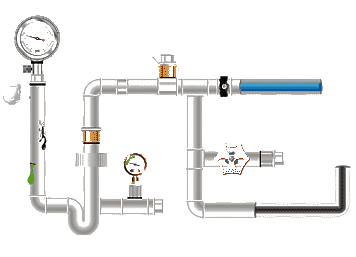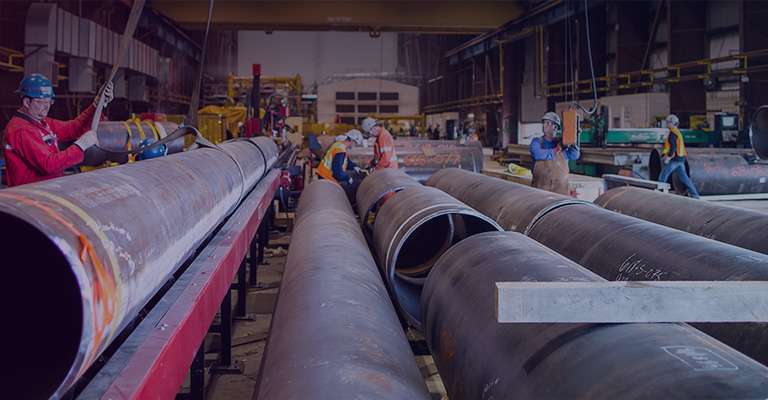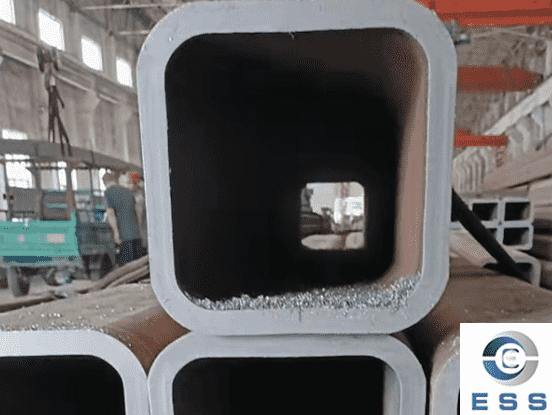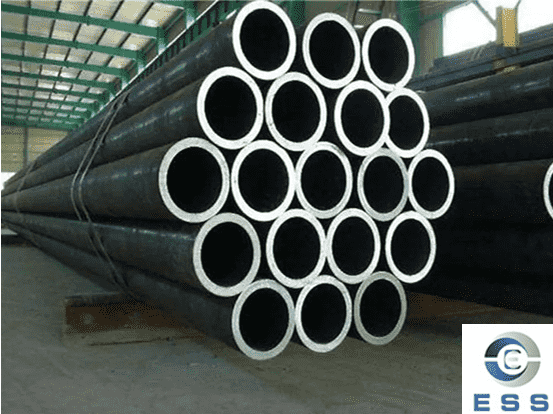
ASTM A106 vs. A53 Seamless Pipe
Seamless
steel pipe is a seamless, round steel tube that offers excellent
compressive strength, high corrosion resistance, and a high temperature
resistance. Depending on the production and quality inspection standards, the
standards for seamless pipe vary. Common standards for seamless pipe include ASTM A106 and ASTM A53.
While A106 and A53 share some similarities, there are also some significant
differences. The following provides a detailed introduction:
ASTM A106 Pipe
ASTM A106 is a standard specification for
hot-rolled seamless steel pipe. The ASTM A106 standard covers seamless carbon
steel pipe for high-temperature service. It is suitable for high-temperature
and high-pressure environments, such as those encountered in the petroleum,
chemical, and power industries. This pipe has the following characteristics:
1. High-Temperature Strength
ASTM A106 pipe exhibits high strength and
toughness at high temperatures, capable of withstanding the demands of
high-pressure and high-temperature environments.
2. Excellent Corrosion Resistance
ASTM A106 pipe is made of carbon steel and
other alloys, offering excellent corrosion resistance and the ability to
withstand a wide range of chemical substances.
ASTM A53 Pipe
ASTM A53 is a standard specification for
cold-drawn seamless steel pipe. The ASTM A53 specification covers seamless and
welded pipe types, carbon steel, and black steel materials. Surface finishes
include natural, black, hot-dip galvanized, and galvanized
steel pipe. Diameters range from NPS 1⁄8 to NPS 26 (10.3mm to 660mm), with
nominal wall thicknesses. This pipe is suitable for low-temperature,
low-pressure environments, such as heating, air conditioning, and water supply.
This specification offers the following characteristics:
1. Excellent Low-Temperature Toughness
ASTM A53 pipe exhibits excellent toughness
and impact resistance at low temperatures, making it suitable for use in
low-temperature environments.
2. Excellent Corrosion Resistance
ASTM A53 pipe is made from carbon steel and
other alloys, offering excellent corrosion resistance and the ability to
withstand attack from a variety of chemicals.
ASTM A106 vs. A53 Pipe: Types and Grades
1. ASTM A53 E/F/S Type Steel Pipe
ASTM A53 has two grades: Grade A and Grade
B.
ASTM A53 Type F, furnace butt-welded
continuous pipe. Grade A only.
ASTM A53 Type E, electric resistance
welded, post-weld weld heat treatment temperature not less than 540°C.
ASTM A53 Type S, extruded seamless steel
pipe. Grades A and B.
Note: Grade B electric resistance welded
seamless steel pipe should be heat treated at a minimum temperature of 1000°F (540°C) after welding to eliminate the
presence of untempered martensite, or treated in such a manner that no
untempered martensite remains.
If different grades of raw steel are
continuously cast, the resulting transition material should be determined.
Manufacturers should use a process to remove the transition material that
reliably distinguishes the grades.
If ASTM A53 Grade B is used in ERW
(electric resistance welded) pipe, the weld should be heat treated at a minimum
temperature of 1000°F [540°C].
This will not leave untempered martensite.
If ASTM A53 B pipe is cold expanded, the
expansion should not exceed 1.5% of the required outside diameter.
(Type F is not used for flanging.
If Type S or E is used for coiling or cold bending, ASTM A106 Grade A pipe is
recommended. Although the use of ASTM A106 Grade B is not prohibited, Type E of
ASTM A53 pipe can be supplied with either non-cold expanded or cold expanded
steel, depending on the manufacturer's facility.)
2. ASTM A106 Grades A/B/C
For ASTM A106 steel pipe, only seamless,
cold-rolled, and hot-rolled processes are used. Cold-drawn Grades A, B, and C
are available.
Grade A: Maximum carbon 0.25%, Mn
0.27-0.93%. Minimum tensile strength 48,000 Psi (330 MPa), yield strength
30,000 Psi (205 MPa).
Grade B: Maximum C value less than 0.30%,
Mn 0.29-1.06%. Minimum tensile strength 60,000 Psi (415 MPa), yield strength
35,000 Psi (240 MPa).
Grade C: Maximum C 0.35%, Mn 0.29-1.06%.
Minimum tensile strength 70,000 Psi (485 MPa), yield strength 40,000 Psi (275
MPa).
ASTM A106 vs. A53 Pipe: Size Range
1. American Standard A53: 50-600 [DN]
When cold expansion of steel pipe occurs,
the expansion should not exceed 1.5% of the specified outside diameter of the
pipe.
2. American Society for Testing and
Materials ASTM A106: 6-1200 [Normal]
Weight: The weight of any length of pipe
must not exceed 10% of the specified weight and must not be less than 3.5% of
the specified weight.
Thickness: The minimum wall thickness at
any point must not exceed the specified nominal wall thickness by more than
12.5%.
A106 generally offers a wider range of wall
thicknesses and diameters to accommodate more complex engineering requirements.
ASTM A106 vs. A53 Pipe: Chemical Properties
ASTM A53 and ASTM A106 have fundamental
differences in their chemical composition requirements.
The primary differences between the two lie
in the manganese, phosphorus, and sulfur content. ASTM A53, by comparison,
contains relatively higher levels of all three.
|
Standards
|
ASTM A53
|
ASTM A106
|
|
Elements
|
Type S (Seamless) Grade B
|
Type E (ERW) Grade B
|
Grade A
|
Grade B
|
Grade C
|
|
Carbon, maximum percentage
|
0.30
|
0.3
|
0.25
|
0.3
|
0.35
|
|
Manganese℅
|
1.2
|
1.2
|
0.27-0.93
|
0.29-1.06
|
0.29-1.06
|
|
Phosphorus, maximum percentage
|
0.05
|
0.05
|
0.035
|
0.035
|
0.035
|
|
Sulfur, maximum percentage
|
0.045
|
0.045
|
0.035
|
0.035
|
0.035
|
|
Copper, maximum percentage
|
0.4
|
0.4
|
0.4
|
0.4
|
0.4
|
|
Nickel, maximum percentage
|
0.4
|
0.4
|
0.4
|
0.4
|
0.4
|
|
Chromium, maximum percentage
|
0.4
|
0.4
|
0.4
|
0.4
|
0.4
|
|
Molybdenum, maximum percentage
|
0.15
|
0.15
|
0.15
|
0.15
|
0.15
|
|
Phosphorus, maximum percentage
|
0.08
|
0.08
|
0.08
|
0.08
|
0.08
|
ASTM A106 vs. A53 Pipe: Mechanical Properties
ASTM A53 pipe is designed for mechanical
and pressure applications, with a minimum yield strength of 30,000 psi and a
minimum tensile strength of 48,000 psi.
In comparison, ASTM A106 pipe offers higher
strength, with a minimum yield strength of 35,000 psi and a minimum tensile
strength of 60,000 psi.
ASTM A106 vs. A53 Pipe: Delivery Condition and Applications
ASTM A53 pipe is typically delivered in the
hot-rolled or cold-finished condition and is suitable for low-pressure fluid
transport (e.g., water and gas) and general structural applications. Welded
pipe requires weld heat treatment for stress relief.
ASTM A106 is primarily used in
high-temperature and high-pressure applications (such as steam piping and
boiler systems). It requires seamless steel pipe to undergo normalizing heat
treatment or controlled rolling to ensure stability and creep resistance at
high temperatures.
A53 is designed for general use, while A106
is designed for high-temperature environments and has more stringent
manufacturing and heat treatment requirements.
Summary
When choosing ASTM seamless pipe, you need
to consider the specific application and requirements. For general low-pressure
applications, A53 seamless pipe is an economical choice; for piping systems
operating in high-temperature and high-pressure environments, A106B seamless
pipe is more suitable. When purchasing seamless pipe, you should also pay
attention to the standard and quality of the pipe material to ensure that the
material meets the requirements to enhance the safety and reliability of the
piping system.









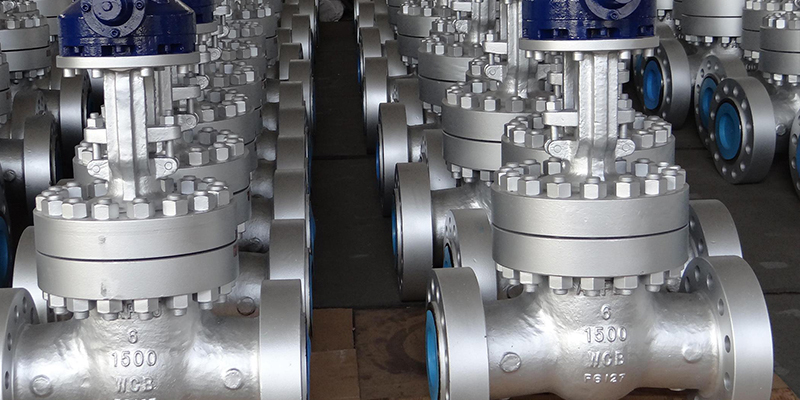
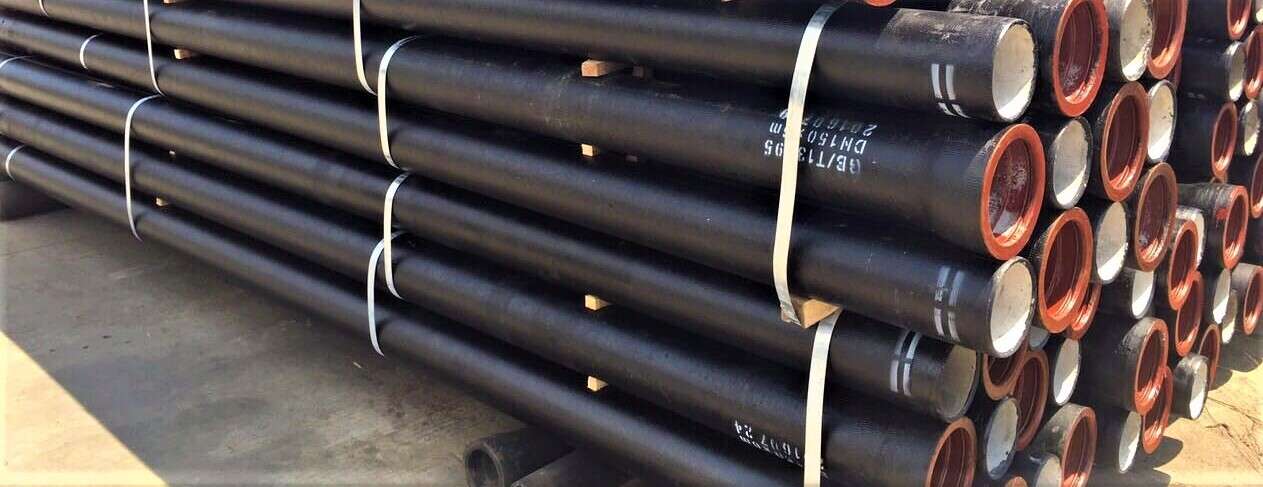


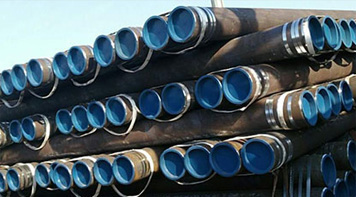 Eastern Steel Manufacturing Co.,Ltd not only improve product production and sales services, but also provide additional value-added services. As long as you need, we can complete your specific needs together.
Eastern Steel Manufacturing Co.,Ltd not only improve product production and sales services, but also provide additional value-added services. As long as you need, we can complete your specific needs together.
